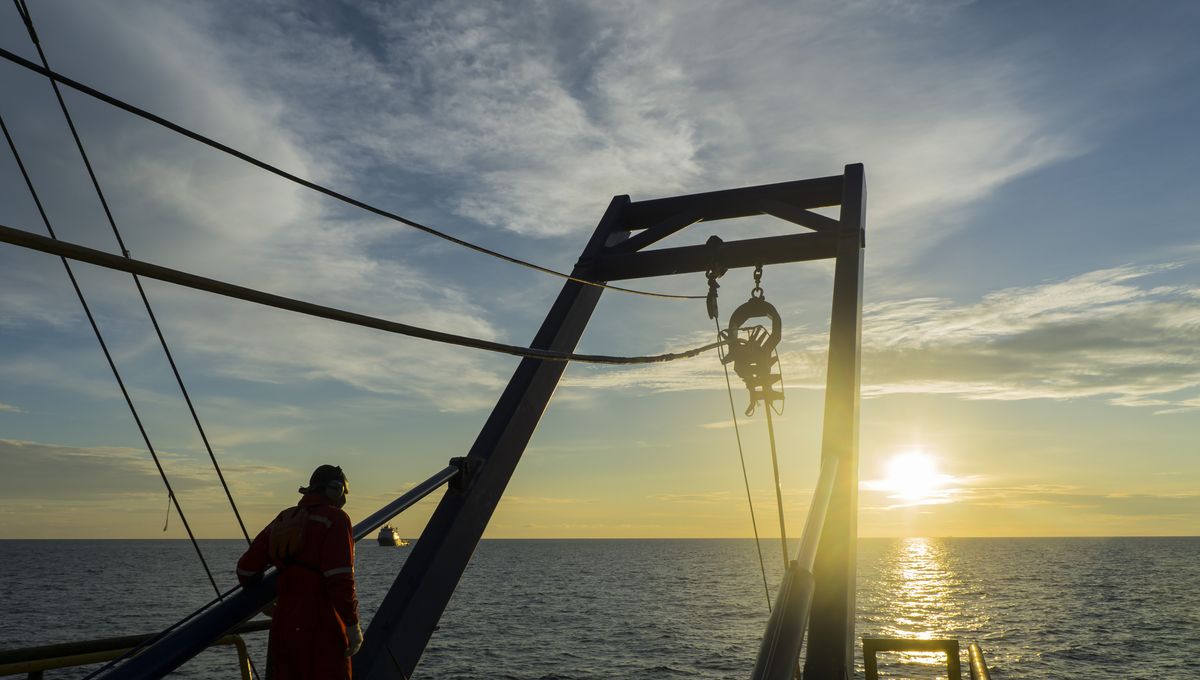
China is set to venture where humanity has scarcely been before: beneath the Earth’s crust, into its mantle. To achieve this aspiration, it has deployed Meng Xiang – meaning “dream”– a colossal drilling ship built to pierce through kilometers of seabed. If successful, this mission could unlock secrets of the Earth’s interior and the tectonic forces that shape our planet.
ADVERTISEMENT
Meng Xiang officially entered service in November 2024, reportedly boasting an unparalleled ability to drill up to 11 kilometers (6.8 miles) beneath the seafloor.
Few other scientific drilling ships exist – and none of this caliber. There is Japan’s Chikyū with a maximum drilling depth of 7 kilometers (4.3 miles) and there was the US-owned JOIDES Resolution with a maximum of 8.4 kilometers (5.2 miles), but the latter has since been scrapped.
Meng Xiang is the latest successor to these two literal groundbreakers. Measuring 179.8 meters (589 feet) from bow to stern, the giant ship is able to be self-sufficient for 120 days and can accommodate a crew of 180 people, as well as nine science laboratories researching fields such as geology, geochemistry, microbiology, and ocean science.
Humans have always been captivated by the mysteries beneath our feet. The deepest artificial hole on Earth is known as the Kola Superdeep Borehole, reaching a depth of 12,262 meters (40,230 feet) below northern Russia. That’s over 1 kilometer deeper than the drilling potential of Meng Xiang, but it’s important to note that Earth’s crust is thinner in some areas than in others.
Inland, the continental crust is around 37.5 kilometers (23 miles) thick. However, the oceanic crust is often just 5 to 7 kilometers (3 to 4 miles) thick. There are also mid-ocean ridges where it’s even thinner due to dynamic geological gesticulation.
ADVERTISEMENT
This has been exploited by scientists who have used its relative thinness to gather samples of Earth’s mantle, although Meng Xiang hopes to reach this layer by drilling through kilometers of crust.
Not only could this be a mini “Apollo moment”, marking humanity’s first steps into a new frontier, but it also has the potential to revolutionize our understanding of Earth’s structure, geology, and the forces that shape our planet.
“The deep-earth core samples it retrieves will provide global scientists with direct evidence to study plate tectonics, oceanic crust evolution, ancient marine climates, and the evolution of life. It will aid humanity in better understanding, protecting, and utilizing the oceans,” said Xu Zhenqiang, director of China Geological Survey’s Guangzhou Marine Geological Survey, in a statement.
Additionally, the launch of Meng Xiang is yet another sign of China’s rising status as a scientific superpower, challenging the long-held dominance of the US.
ADVERTISEMENT
“I’m very happy that China has stepped up in providing a ship,” James Austin, a seismic stratigrapher at the University of Texas at Austin, told Science in 2024, adding: “It’s a sad day for the United States.”
Source Link: China's New Ship Can Drill 11 Kilometers Deep, Hoping To Reveal The Secrets Of Earth's Mantle